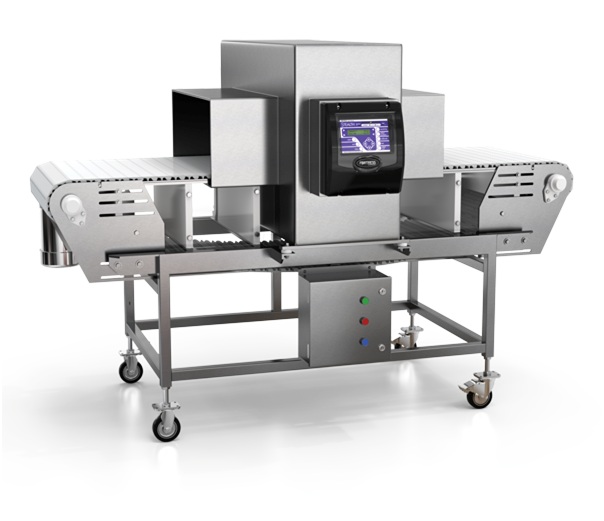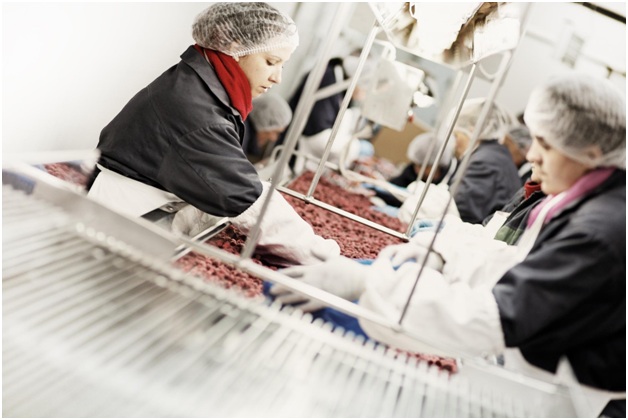In an age where most consumers are permanently plugged into social media, news of a contamination-related food product recall can spell the end of any company, big or small. It can be very difficult to rebuild a brand that has been tarnished by a recall, given that food manufacturers are entrusted with the very lives of the consumers who purchase their products. As such, when it comes to providing food products for human and even domestic animal consumption, most manufacturers know that investing in product safety must be a top priority.
Food contamination
There are four main categories of food contamination: biological contamination, chemical contamination, physical contamination, and cross-contamination.
Biological contamination refers to the presence of harmful organisms such as E. coli. Chemical contamination can include the presence of anything from common household cleaning agents to industrial pesticides. Metal, hair, jewelry and even animal droppings are all considered physical contaminants. Finally, cross-contamination refers to the transfer of bacteria or pathogens, including allergens like wheat, across different products.
While most food recalls are related to the presence of allergens (baked goods are particularly involved in this), metal is the biggest source of food contamination during the production process. This is because metal is so very present in any manufacturing site. From mixing bowls to chopping blades, maintenance tools to a loose screw on a worker’s eyeglasses, there are many possible sources of metal-related contamination. However, manufacturers have invested heavily in food grade metal detectors over the last thirty years, which enable workers to stop contaminated products from hitting the grocery shelves, thereby avoiding costly recalls.
Metal detectors for food manufacturing
Two main categories of food grade metal detectors include balanced coil detectors and ferrous-in-foil metal detectors.
Ferrous-in-foil metal detectors can be used on foil-wrapped food products that may potentially contain ferrous metal contaminants. Ferrous contaminants generally contain iron, and are highly magnetic, which make them easy to detect. These include carbon steel, cast iron, wrought iron and more. Many of these metals are very common in different manufacturing industries, and are used in everything from the tools, piping, shipping containers, etc.
Balanced-coil metal detectors are the more common of the two, as they can be used on a wide variety of different food products and contaminants, including stainless steel and non-ferrous metals such as aluminium, copper, lead, zinc and tin. These are all very prevalent in the manufacturing industry, which is why it is so important to create a proper contamination-prevention plan and implement the right metal detectors.
Metal detectors can be used across any food manufacturing industry. Those who produce baked goods, meat, frozen goods and even seafood need not worry about finding the appropriate detector for their products, as many food grade metal detectors are customizable if out-of-the-box solutions aren’t quite the best fit. Both the ferrous-in-foil and balanced coil metal detectors already come in different configurations to best suit the vast array of food product types available to consumers. For instance, there are gravitational systems that work best on products such as flour and coffee, while other systems are suited to detecting metal contaminants in paste-like products such as sausage filling.
Setting up metal detectors
Ideally, metal detectors must be placed at the start and at the end of the production line. This is to ensure that any raw materials coming in are free of contaminants, and to confirm that final products ready to hit the shelves are also all clear. It’s better to catch metal contaminants early on, as they can destroy expensive equipment, causing further contamination points and putting both consumers and employees at risk. In fact, metal detectors can also be placed before particularly costly pieces of processing equipment.
While high quality metal detectors can even detect stainless steel, which is the most difficult metal to detect, it is important to keep in mind that they must nevertheless be implemented alongside a proper contamination-prevention plan. This is because even industrial metal detectors cannot pick up on small particles, such as the kind that might accidentally contaminate a food product if a maintenance worker is doing some welding work two feet away from the production line.
Proper testing procedures must also be implemented in the event that contamination does occur, so that workers can quickly determine the source of said contamination, and if need be, halt production with as little disruption as possible. Educating employees at all levels, from maintenance staff to upper management, is extremely important in ensuring that food contamination is kept at a minimum.
Establishing Hazard Analysis and Critical Control Points (HACCP) processes can help management to identify high-risk sectors of the production line in order to determine ideal locations for metal detector placement. Such processes can also help decide how to best configure other aspects of plant management, such as the timing of maintenance processes, in order to ensure that metal contamination does not occur in the first place. For instance, it is best to mandate that maintenance must not occur during live production, so that metal shavings for instance don’t accidentally find their way into food products.
Conclusion
While it may be easy to be impressed with the quality of modern metal detecting technology, manufacturers cannot simply rely on machines to do all the work. It is important to choose the right detectors for a particular product rather than taking a one-size-fits-all approach to food safety. Proper training and prevention processes must also be implemented in the workplace so that metal contamination does not occur in the first place, as metal detectors can only do so much in ensuring the safety of consumers, employees, manufacturing equipment and food products. It is everybody’s job to make sure that safety is a number one priority in the food manufacturing business.

